iModeler Review: Eduard 1/48 Spitfire Mk IXc late version
The new 1/48th scale Eduard Spitfire Mk IX has been out for a few weeks by now and a number of reviews and quick builds have already surfaced around the web. The consensus seem to be that this is a great kit in all respects, with correct dimensions and a better outline compared to the previous Hasegawa, ICM and Airfix offerings in this scale.
So has everything already been said? Well, the iModeler editor asked me to review the kit for this site, so here are my thoughts on this latest Eduard offering.
Kit content
Upon opening the box one finds four sprues molded in Eduard's now standard dark gray plastic, along with a circular sprue carrying the clear parts.
My first impression is that the styrene content of this kit has a welcome air of simplicity to it, which hopefully should translate to an enjoyable build. It is quite clear that Eduard continues the more basic approach to construction that they started with the 1/48 Hellcat. The Spitfire kit has nothing of the complexity found in the Fw 190A and Bf 110 series of some years ago. This kit also lacks an engine as included in the more recent Eduard Bf 109. Compared to the Hellcat or the Bf 109, the parts in this kit feel slightly sharper and have a bit more finesse. I cannot really point to any specific parts or details here as this is more of a general feeling I get when examining the parts on their sprues.
(Note: The one piece closed canopy has come loose from the sprue in my sample and is missing in the photo.)
Everything is very well molded, without any sink marks and virtually free of any flash. As this is a ProfiPACK edition there is also a fret of photo etched parts and a sheet of paint masks for the canopy and wheels.
The main decal sheet provides markings for no less than six different aircraft (general markings are provided for only one airframe) and a smaller sheet contains the stencils. Both sheets are printed by Eduard and look very good, although I have read comments about the center portion of the upper wing Type B roundel being a bit too large.
Finally, you have the instruction booklet which is in the familiar A4 format. Apart from the construction sequence along with the paint and markings guide it features a brief history of the Spitfire Mk IX. Colors are called out in Gunze codes from both Aqueous and Mr. Color ranges.
As I am no expert on the Spitfire shapes and dimensions I will leave that for other reviewers to assess. But one cannot describe this kit without mentioning the surface detail, as it is simply gorgeous. No need for riveting tools here as the rivet lines are very neatly rendered on all exterior surfaces. It will be interesting to see how the rivets will look under a few coats of paint, but I believe they will come out looking very convincing.
Curiously, the fasteners for the engine cowls are depicted as standing rather proud which might jump out a bit compared to the subtle rivet lines elsewhere. But I can imagine a quick swipe with sandpaper will be all that is needed to tone them down, should you wish to do so.
Examining the photos of Eduard's first test shots for the kit I somehow got the impression that Eduard had molded the elevators together with the stabilizers, much in the same way as with their Bf 109 kits. I was very pleased to find they are provided as a separate unit, making the elevators posable – a big plus in my book. Indeed, all control surfaces are molded separate while the flaps are molded in the closed position which seems wise considering they are normally retracted when the aircraft is on the ground.
Further examining of the sprues reveals a few alternate parts, where some are needed to properly depict the marking options and some parts are surplus for this release.
• Two styles of stabilizers – straight or kinked elevators
• Three styles of wheels – four or five spoke hubs or with covers
• Two styles of wingtips – standard or clipped (clipped wingtips are provided in both solid and clear plastic)
• Two styles of tires – smooth or radial thread
• Two styles of main gear legs with gear covers – with or without scissor links
• Two styles of lower engine cowls – with or without provision for the late radiator scoop
As previously mentioned, not all of these parts are options for this release and are thus clearly marked in the instructions as parts not for use.
Aftermarket extras
Although outside the scope of this review it should be mentioned that along with the release of this kit Eduard has also released a number of upgrade sets for anyone who wishes to enhance the kit even further. In the Brassin range there is a complete cockpit, a set of fishtail exhausts (straight replacement for the kit items) and a set of five-spoke wheels (block thread pattern). Also available are a pair of photo etched sets in the form of landing flaps and surface panels.
Construction - and examining a few details
Looking at the instructions the assembly appear to be straightforward and laid out in the usual order, starting with the cockpit. Here is where the majority of the photo etched parts are used to good effect. For the instrument panel you can choose between applying a decal or pre-painted photo etched parts to a flat plastic panel or go with a plastic instrument panel that have the switches and dials molded on. Either way I feel you will end up with a very detailed Spitfire office with what is provided in the box. The Brassin cockpit would surely add an extra level of detail to this area but considering what is really visible when the fuselage is closed up I dare say the kit cockpit will do just fine. Just remember to leave of the flare rack (part F47) located on the front of the seat as this was not fitted to the Mk IX.
Construction then moves on to assembling the fuselage and fitting the wings and stabilizers. Of note here is the inclusion of a wing spar that forms part of the wheel wells, at the same time ensuring correct dihedral for the wings. The wheel wells are true multi-part assemblies but from what I have read among those that have completed this stage everything will fit together without problems.
Assembly is rounded out with attaching exterior details like the radiators, landing gear, exhausts and propeller. The exhausts are hollow molded and look very convincing for being plastic. The propeller blades appear to capture the shape of the Rotol propeller well. While in this area I want to mention a detail I found a bit curious. The depression at the very tip of the spinner is very prominently rendered by Eduard. A comparison between the Eduard spinner and Tamiya's 1/32nd scale version shows that this area is more subtly represented in the latter kit. From looking at photos of the real thing I feel Tamiya has the better rendition of this area, but it may as well be a matter of personal taste.
Editor's note
However excellent the Eduard kit is, I think it is still a bit over-engineered compared with the recently released Airfix 1/48 Spitfire PR XIX. Examples of this include multi-part wheel wells, two-piece upper cowling with a seam running along the top, or the similarly multi-part underwing coolers. The Airfix PR Mk. XIX is just as accurate in shape as Eduard's Mk IX, but it is also considerably simpler in its approach to kit engineering – for example using slide-molding technology to reproduce the complex upper cowling shape without the need for dividing the fuselage into multiple parts. Statistically, fewer parts translate into less filling and sanding, plus lower risk of messing the things up.
Yes, the Airfix kit does not have the recessed rivets and the lapped underwing panels of the Eduard kit. But from the accuracy standpoint, all those rivets are not necessarily a blessing. For example, Eduard has dutifully rendered rows of rivets along the wing leading edges, but a look at the real-size Spitfire will show that due to the unique construction of the Spitfire wing edges, the riveting in this area is all but completely invisible even in 1/1 scale. Eduard's choice to reproduce them makes their kit perfectly true to the available drawings, but I will consider filling the wing leading edge surfaces smooth on my model to better reflect the feeling of the real aircraft. The larger Tamiya Spitfire also has rivets on its leading edges, but they are considerably more subtle.
Random thoughts and conclusion
Upon learning of Eduard's plan to release a Spitfire Mk IX in this scale I first thought it was a rather bold move, considering that Tamiya already has their highly acclaimed 1/32nd scale Mk IX and any day might decide to crank out a 1/48th scale version. But, all things considered, a Tamiya Spitfire would find it tough to compete with Eduard's offering no matter how you look at it. True, one could expect it to be an easy build thanks to the classic Tamiya design and ingenuity we all know and love but the kit will most likely be a bit simpler in surface detail and overall finesse. Also, you just need to consider the high quality of the Eduard plastic and the very complete package provided in the ProfiPACK boxing. Factor in the very attractive pricing of Eduard kits and we have a winner.
As Eduard already has a Spitfire Mk IX on offer in tiny 1/144th scale, a 1/72nd version might not be too far off. If and when Eduard decides to go for such a release they will surely have a winner there, too.
But let me get back to the subject of this review with a few last words. Correct shapes and dimensions aside I find the high points of this very kit to be the separate rudder and elevators along with the superbly done surface detail and well detailed cockpit.
In other words, I cannot wait to dive into this kit and cut some plastic!
My thanks to the iModeler editor for the review sample and also for adding his thoughts on the Eduard kit.
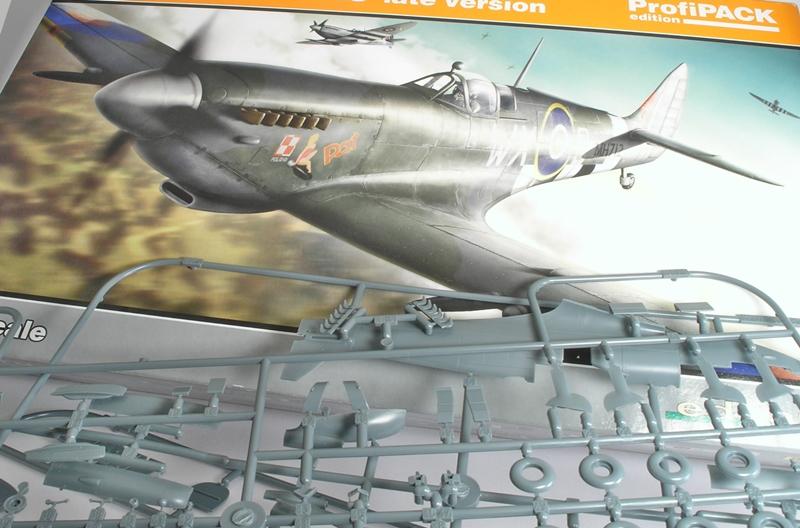

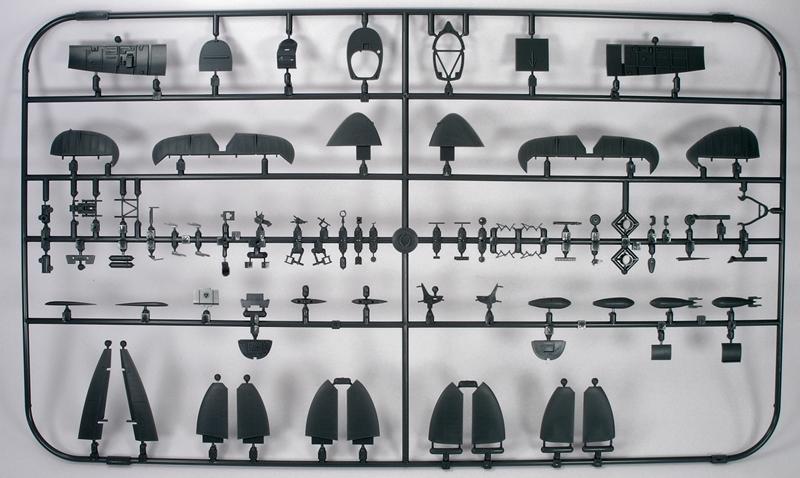
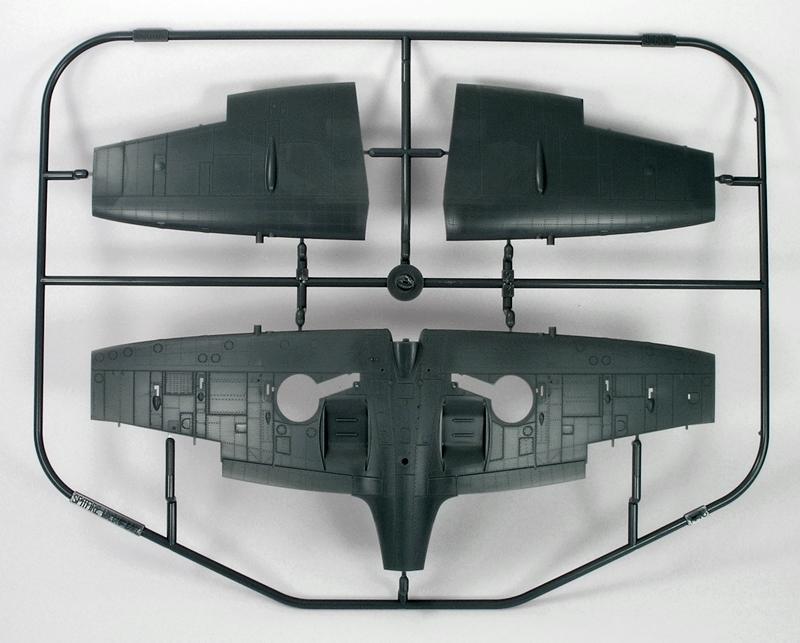

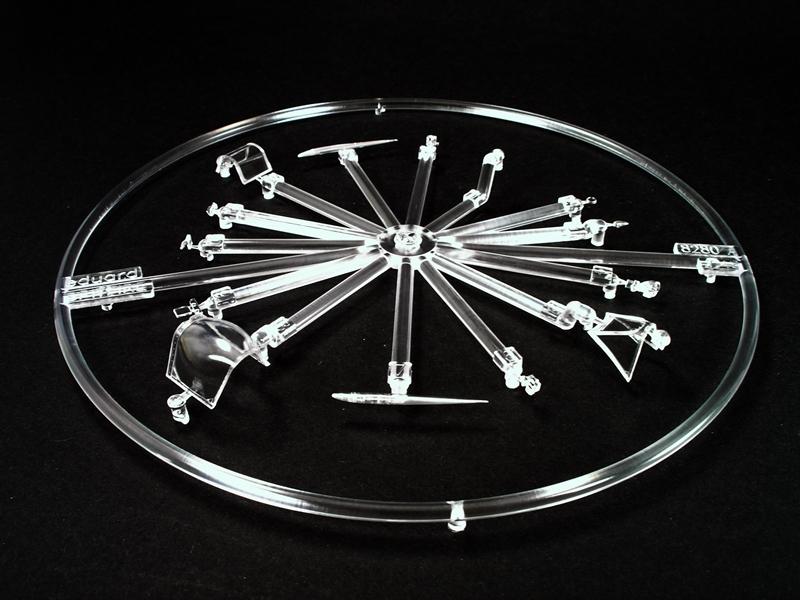
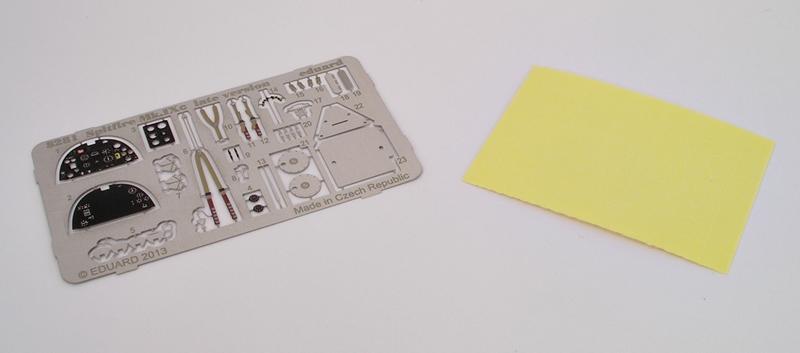

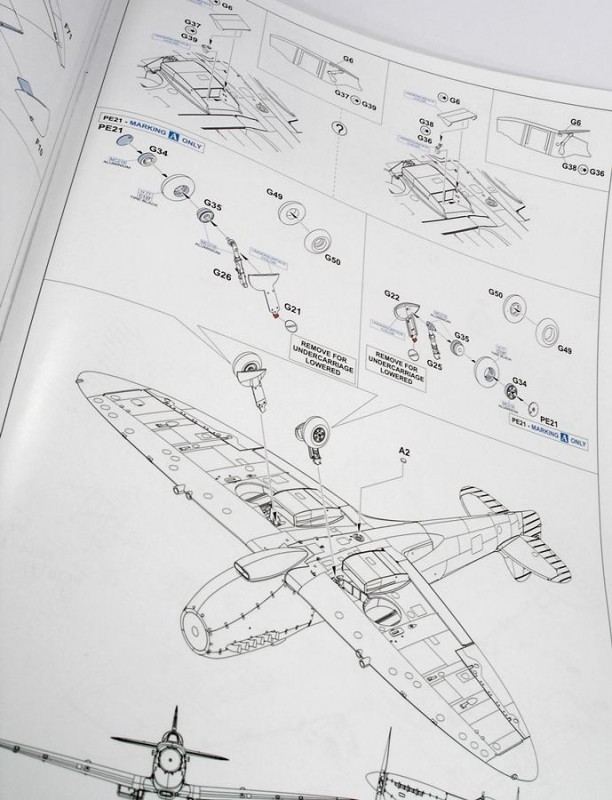
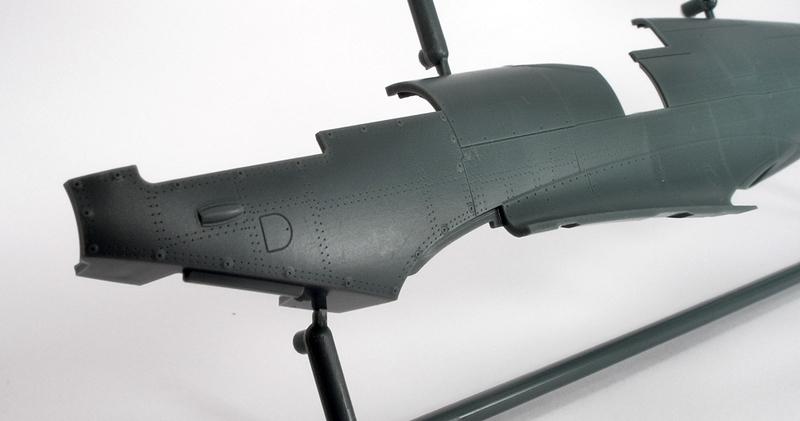
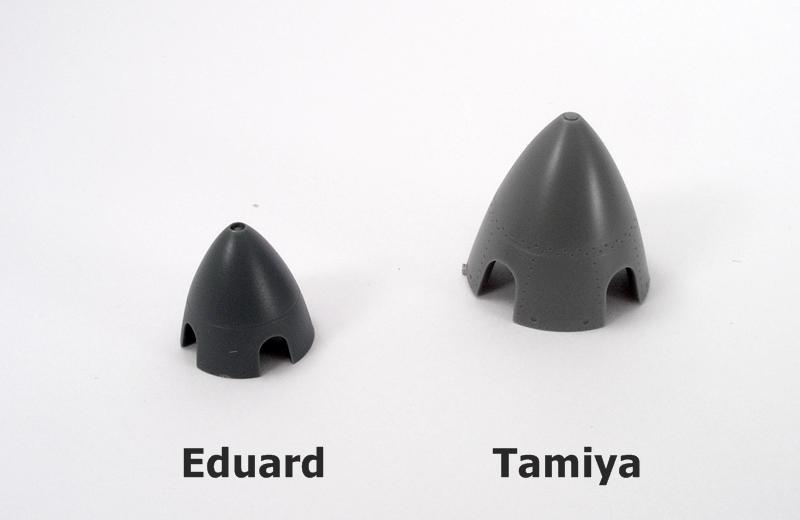
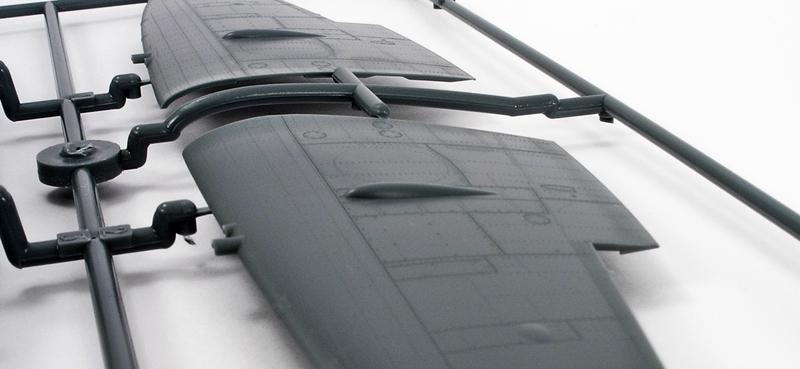

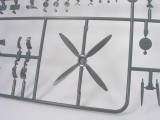
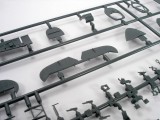
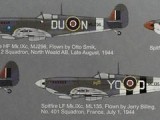
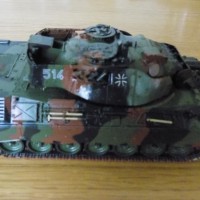
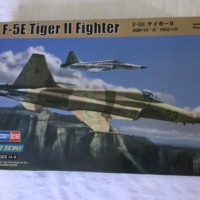
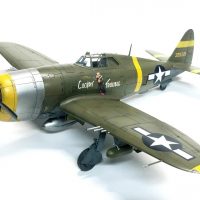
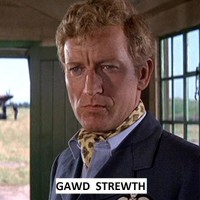
Anders... thanks for you remarks and thoughts on this sure to be popular kit offering. I also appreciate the inclusion of the aftermarket availability as well.
Well this is such a good review...so good that now I want to build one!...(I have a feeling I'll be a spitfire fan after all)..Thanks Anders!
Excellent report and review, Anders...thanks so much for taking the time to post this. Wish there were more like it.
Excellent job on the review. Thanks Anders!
Interesting comments about the Airfix PR XiX kit vs Eduard release. I've purchased the Airfix kit and must say that I agree with Anders assessment. However, the Airfix designed the kit to be just a PR XIX Spitfire and nothing more while Eduard has designed their kit to reflect a A/C that was constantly evolving. With different wings and tail arrangements, the airframe went from Rolls Royce powered Merlins/Packard Built Merlins engines to Griffon powered engine. The point being that there were many changes to the airframe even in the Mk IX series which is reflected in the options in the kit... different tail arrange- ments,tires, etc,etc... hence the perception of over engineering. Not all Mk IX were all a like. The ideal modeling manufactures subject was the Hellcat which stayed relatively the same during its production run. Either way I think the Eduard or the Airfix kits are going to be winners. Airfix has made a photo bird and Eduard has captured a A/C that was constantly evolving and has engineered a kit to allow the modeler the option to model all the subtitles of the shape shifting Spitfire.
Worthy of mention is the Eduard's hollowed-out exhaust parts, which I thought were pretty surprising...
I agree on the rivets, especially on the wing leading edge, as pointed out.
The big surprise for me was how narrow the cockpit opening was: A good 2 scale inches narrower than almost all other 1/48th Spitfire kits (12.5 mm vs 13.5 on the Airfix Mk XII: This is narrower than the correct dimension for even the Me-109, which is 13 mm, although the Hasegawa is at 14 mm, which is way wrong): 12.5 mm is in agreement with the Tamiya 1/32 kit scale-wise, so 600 mm outside skin to outside skin must be it, instead of 650... Of note is that the straight bottom line of the Tamiya 1/32 kit's sliding canopy portion is mysteriously two inches longer...
In my opinion, the Eduard nose "flares" from the spinner back at a much less steep curvature, creating a much less steep "step" behind the spinner than the 1/32 Tamiya, and this is definitely superior-looking in favour of the Eduard vs photos... Bot spinners supposedly agree on the diameter (I haven't checked but so I'm told), so it must be the nose itself that is different...
There is a concave "bend" in the Eduard wing surface near the wingroot, and that looks more defined than in other kits: Don't know how it should look, but it is noteworthy...
This probably the "definitive" 1/48th Mk IX for a very long time...
Gaston
I posted some thoughts at my own model blog. I'm in the middle of the build now. In terms of parts casting, it is a stunning kit. But, at the risk of being labeled a heretic... I'm not totally enamored with it, despite really, really wanting to be.
http://jonsmodelblog.blogspot.com/2013/05/heretical-thoughts-on-eduards-new-148.html
Eduard has announced they will also release a 1/48 Mark V, so the modular design of this kit means we'll see the basic airframe bits at least one more time...
Bob Mills
Hi Jon,
I've read your thoughts in your blog and I must say I've founded really informative. Great review as well. The more people share their experience the best. Even though they are different scales, between the Eduard 1/48 or the Tamiya 1/32, which one you'll choose? in terms of detail, fit, accuracy, final model and overall building process (fun included).
jorge
Thanks for your kind words, Jorge!
Despite the scale difference, I would definitely choose the Tamiya kit. While it is a much more involved build, with the engine, etc., It's engineering and detail out of the box is stunning, and the fit is exceptional. It is certainly more fun to build, in my experience.
Great!, thanks Jon for your advice...I have the opportunity to build the A6M5 zero Tamiya in 1/32 and I do remember how good it was, so I was kind of suspecting your choice.
cheers mate!
What is it about the Spitfire Mk IX in 1/48? If one follows reviews, no one has seemed to get this aircraft right in terms of shape and such. I have built the Hasegawa & Occidental versions of the Mk IX. Both of these kits were bashed because of supposed shape issues. Hell, they both look like Spitfires to me. The devil take the "Rivet Counters", if it looks like a Spitfire when built, then that is good enough for me.
Modelers are a fickled group of people. The latest trend of using a pounce wheel to represent rivets is the latest craze for those in the know. However, I'm surprised that folks haven't come up with a proper "scale' viewing distance. Most rivets when viewed from thirty feet away disappear. Unless your up close and personal right or viewing a A/C that has been exposed to the elements for longer periods of time. Of course the technology allows for better accuracy or measurements and interpretations...kind of like having a Guinness vs Jameson. The end result is the same if you over indulge. One will get you there quicker and the other takes time. Best to do things in moderation. What ever floats peoples boat.
Geez, no wonder I get into trouble. Guinness vs Jameson? I do them both at the same time and never in moderation.
A belated thanks for all your comments and the interesting discussions regarding the Eduard kit as well as other matters! 🙂
Jon, thanks for sharing your thought on this kit in your blog - very valid points indeed.
Jon - interesting post. I have a theory that many on the net over-value Eduard kits because they have things modelers like...PE, great looking surface detail, interesting engineering, great visual presentation, and they look awesome in the box. But they are fiddly to build and not quite the wonder kits they appear to be to those of us who aren't top line modelers. I've been working on the 1/72 Hellcat and in the box the lapped panel lines are a joy of molding, but when it comes to building they are kind of a pain...as you say, a seam is a seam. Not to mention, I'm more of a plastic butcher and I find their panel lines to be too fine... Anyway, I do have the Spitfire and look forward to building it, but I think I'll work on a couple of new tool Airfix kits before I return to Eduard.
The new Airfix Spitfire PR XIX is probably just as good, or even better, than the Eduard kit: It looks amazingly true to the real thing, if an oddball variant... It does appear to be a simpler build to boot...
I wouldn't recommend to anywhere near the same level any of Airfix's earlier 1/48th Spitfires, and especially not their recent Mk XII and F. XVII. Even their post-war Griffons are not that great accuracy wise (sliding canopy and rocker covers)...
I sort of corrected most of the issues of the Airfix Mk XII, and it took 2 years to get it ready for paint... And that was with not as many breaks as you'd think...
One thing I found poor on the Eduard kit is the raised cowl fasteners: They look completely out of place on this kit, and are a poor representation of the real items... I would also assume that they are prone to sanding or assembly damage.
Gaston